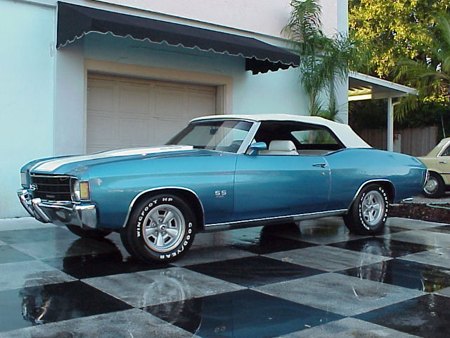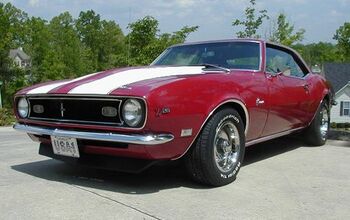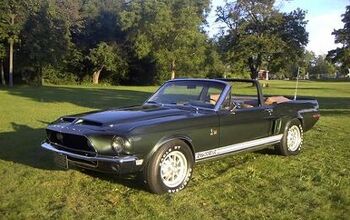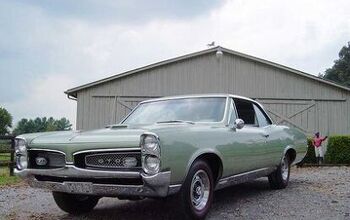The Truth About Muscle Cars: Fourth Place
I grew up in the Muscle-Car Belt – the area between the Rockies and wherever the first Ivy League university is in the east. Problem was, my family was Not From Around Here. We were English. We spoke funny. We ate Marmite. We were scrawny and had bad teeth.
But worst of all – and this sounds like an infectious disease – we had Jags.
Thus began my life as a misfit – I grew up, got MGs (another disease), then went and got into rotaries (an indictable offence in most central states– tasting the Wankel), and then turbos.
I hit adulthood without ever owning a V8 – as unimaginable where I grew up as not having a bar mitzvah in northern New Jersey or failing to develop a respectable rap sheet in East LA. And yet I didn't feel at a loss – I went from tuning exotic V12s to eking 500 horses out of a Japanese two-liter turbo. I was a bit pretentious about it. Cubic inches? That's for sissies. Size only matters to people who can't perform.
Except I may have been wrong. These days I host a TV show about cars, and for a particular episode this year I had to buy, modify, and drag race a muscle car. So I bought a Firebird. And as muscle cars go, a 1969 Firebird with a 350 small block is not that remarkable. Not a huge engine – a measly 5.7 liters. Probably gets almost eight mpg. Not stupid valuable – it's worth maybe $15,000 on the open market. Or maybe a shade over $100,000 at Barrett-Jackson.
If Don Johnson wiggled his ass on the fender, maybe $250,000, but no more.
Working with the Firebird confirmed everything I always thought about any of the breed: it's a one-trick-pony car. The handling sucks. The steering is way over-assisted. The turn-in is appallingly bad. The axle tramp is shocking. The car floats like a German businessman at the hotel pool. You slide off the seats like the Aztek slid off Pontiac's product line.
But boy, you put some heads and a carb on that small block, headers and straight pipes, and a shot of nitrous, and you can go from here to 1320 feet from here in under 12 seconds. That's pretty important. Isn't it?
The truth about muscle cars is that they're about power, but an uniquely American type of power. They are quintessentially democratic: they put all the power in the hands of almost anyone, regardless of whether they have any of the associated abilities to handle it. Like guns. Like George Bush.
Compare and contrast: the Porsche 928 was a terrific car. And, like a muscle car, it had a big, burbling, understressed V8 engine that could torque the pants off a schoolgirl. But there was nothing democratic about it. It was technologically superior to almost every other car. As you drove that car faster – into the elite speed ranges over 130mph, it got better and better. Hunkered down and got to do what it was best at: crossing entire continents faster than everything else on the road and delivering its occupants ready to play baccarat at Monte Carlo. It was, in short, everything that a muscle car is not.
A '69 Firebird, by contrast, is good at going from your front door to the corner store, as long as the corner is exactly one quarter of a mile away, on a straight road. You can go longer distances if you want, but only if you slow right down before turning the steering wheel, and for heaven's sake don't go over any big bumps. In this way, it is also classically American – single-minded, powerful, but not so responsive to directional change or upsetting undulations in the path. Good in short spurts, but not likely to travel. America, this is your car.
So part of the charm of the New Muscle Cars is their very lack of sophistication. Kudos to Chrysler with their 300 and SRT lines for nailing the American gestalt square center: big power, big noise, aggressive, sneering looks, and total confidence that nothing else is required. Yeah, the interiors are still completely unremarkable. Sure, the suspension isn't so advanced. Okay, you probably don't want to be with it all day long.
But who cares? This is America baby! Only fairies play baccarat.
And that's what's behind the incredible auction values for muscle cars – the poor Boomers With Money yearn for a post-WWII time when it really was that simple, when power really was the answer. They want to verify that view by valuing a $15,000 car at over $100,000. Poor kids. They've been exposed to European excellence – they know that Power is Nothing Without Control. But they can't accept it.
And the best way to say that is "muscle car."
[Published as originally submitted.]
More by Admin
Latest Car Reviews
Read moreLatest Product Reviews
Read moreRecent Comments
- ToolGuy I might be Batman.
- Lou_BC Well, I'd be impressed if this was in a ZR2. LOL
- Lou_BC This is my shocked face 😲 Hope formatting doesn't fook this up LOL
- Lou_BC Junior? Would that be a Beta Romeo?
- Lou_BC Gotta fix that formatting problem. What a pile of bullsh!t. Are longer posts costing TTAC money? FOOK


































Comments
Join the conversation